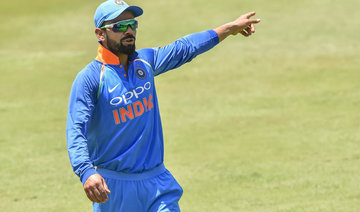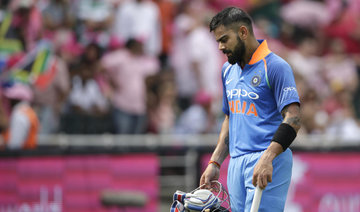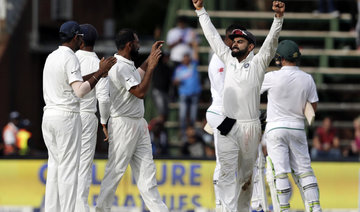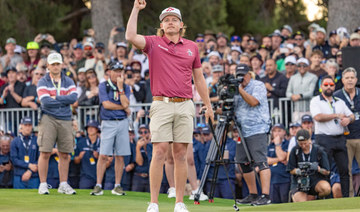BANGALORE: Two Tests into India’s five-match series in England in 2014, the media couldn’t stop singing the visitors’ praises.
Having drawn at Trent Bridge, India had pulled off a famous victory at Lord’s on a green-tinged pitch expected to play into English hands.
Their all-round hero was a light-eyed, frail-looking pace bowler from Uttar Pradesh. Until that summer, Bhuvneshwar Kumar had not even played a Test outside India. But in two games, he grafted 209 runs while seeing off a remarkable 442 balls, and took 11 wickets for 185. India, it seemed, had a new cricketing idol, and England — with Matt Prior already having quit the series and Alastair Cook’s captaincy hanging by a thread — were in disarray.
In such circumstances, it is easy to ride the populist wave. One man who did not was Michael Holding, the West Indies cricket legend. Before the third Test, when Joe Dawes — then India’s bowling coach — asked him to take a look at his charges, Holding did not like what he saw.
“They will not last five Tests,” he told this correspondent. “The legs aren’t strong enough.”
The downturn in Bhuvneshwar’s performances were the best illustration of what Holding had seen. In the next three matches — Old Trafford and the Oval were so seam-friendly that England ran riot — Bhuvneshwar took eight for 321. Those were not disgraceful figures, but they were hugely disappointing in helpful conditions. With the bat too, he tailed away, managing just 38 in six innings.
The metronomic movement and zip off the pitch that had typified his bowling in Nottingham and at Lord’s had long since disappeared by The Oval. The ball floated through at amiable pace, and the batsmen were seldom troubled. Even under overcast skies, Bhuvneshwar, who was supposed to be India’s premier swing bowler, could not do much.
In Australia a few months later, he played just the one Test in Sydney. He took one for 168. With MS Dhoni having retired, and a new captain in charge, Bhuvneshwar did not play another Test for more than 18 months. He did not spend that time idle, though. With Virat Kohli, the captain, making clear his preference for bowlers with some pace, Bhuvneshwar knew that mere swing and control would not get him his place back.
He worked on his strength, both the legs and upper body. And by the time Sunrisers Hyderabad won the 2016 Indian Premier League, he was noticeably sharper in his new ball spells. Apart from swing and seam movement, he had a bouncer that could hurry the batsmen. And the added pace meant that he was no longer cannon fodder on placid pitches.
That season, he took 23 wickets, while conceding 7.42 an over. Back in the Test squad a few months later, he destroyed West Indies with match figures of six for 46 at Gros Islet. But on Indian pitches, memories of his earlier struggles seemed to influence selection. With Mohammed Shami and Umesh Yadav the preferred new-ball pairing, Bhuvneshwar had to settle for the odd cameo. He invariably made them count, though.
At Eden Gardens in 2016, he helped rout New Zealand with six for 76. A year later at the same venue, Sri Lanka — who had controlled much of the game — barely escaped with a draw after his second-innings heroics resulted in match figures of eight for 96. With the white ball too, he turned his fortunes around. Having been restricted to just one game, against the UAE, at the 2015 World Cup, he was an ever-present in India’s run to the Champions Trophy final in England last summer.
In the Twenty20 arena as well, he bided his time. After missing out on the World Twenty20 on home turf in 2016, he’s now an integral part of the squad. His five for 24 in the opening game of the ongoing series in South Africa illustrated just why, as he varied pace and length beautifully to flummox the batsmen.
The media uproar that followed his non-selection for the second Test against South Africa at Centurion said much about how valuable a cricketer he has become across formats. At both Newlands and The Wanderers, he batted with tenacity and nous, and bowled with all the skill he had shown in England nearly four years earlier. Only this time, the legs did not give way. Bhuvneshwar Mark II is here to stay.
Bhuvneshwar Kumar Mark II ready to prove his importance for India
Bhuvneshwar Kumar Mark II ready to prove his importance for India
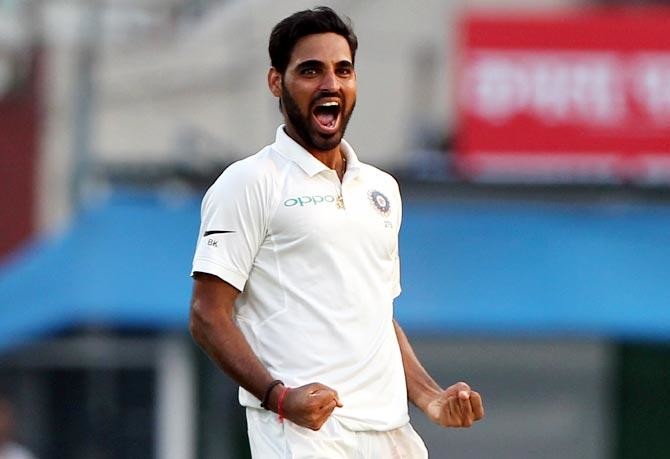
How La Liga is building bridges with Saudi Arabia and regional partners
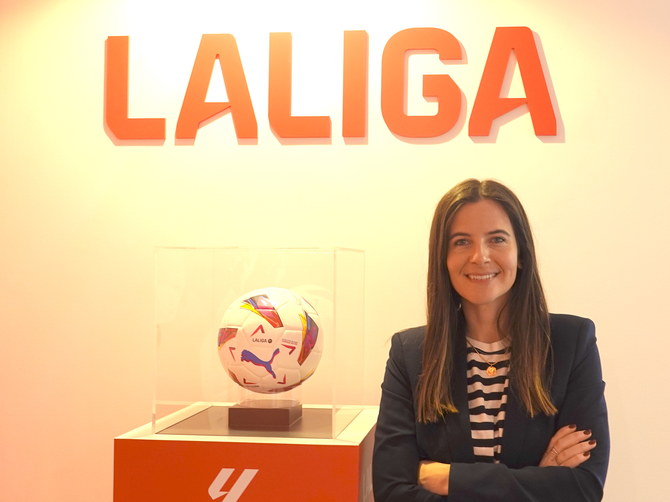
- Managing Director for Middle East and Africa Maite Ventura spoke to Arab News about the recent Futures FC tournament in Riyadh and promoting the Spanish league’s brand and its clubs
DUBAI: On and off the pitch, La Liga’s ties with Saudi Arabian football are growing.
At the start of March, the La Liga FC Futures U14 tournament was held at the Mahd Sports Academy in Riyadh and won by Spanish club Villarreal.
The competition had been organized in partnership with the Kingdom’s Ministry of Sports and saw 12 teams taking part, including eight EA Sports La Liga teams — Barcelona, Cadiz, Atletico Madrid, Sevilla, Villarreal, Real Betis and Osasuna — as well AS Roma from Italy, Portugal’s SL Benfica, Olympique de Marseille ofFrance and Saudi Arabia’s own Mahd Academy.
Just last week, Barcelona-based Espanyol became the latest Spanish club to welcome a delegation of the Saudi Future Falcons program, with the team from the Kingdom beating the La Liga reserve team 3-2 at Dani Jarque Sports City.
There have been several other collaborations and Maite Ventura, La Liga managing director for the Middle East and North Africa, says more projects are set to come to fruition in the coming months and years — all part of La Liga’s mission to grow its brand.
“Our goal in the case of Saudi is about understanding that the popularity of La Liga and the popularity of football in Saudi is huge,” Ventura told Arab News at La Liga’s headquarters in Dubai. “I think more than 80 percent of the population follows football, so we wanted to be there. It's one of the main countries in the region, so for us was very important to be there.
“We not only want to be there with a small project,” she added. “We have many different projects there, with the General Entertainment Authority, with the Ministry of Sports, and (recently) we were celebrating FC Futures in Riyadh, which Villarreal won. We we want to know the countries in which we have fans of La Liga.”
Off the pitch, other ventures include the opening of themed bar and restaurant LaLiga TwentyNine and the world’s largest football museum, Legends, both in Riyadh in collaboration with Saudi events company SELA and the GEA.
“So, this is our mission there, it's about connecting with all of the fans, engaging with the main institutions there,” said Ventura. “We want to be present there, and we don’t want to be there just doing FC Futures, we want to be there for a long time, and we want to be there for our fans.”
When La Liga’s office in Dubai opened in 2014, it became its first ever outside Madrid, with an urgent brief to spread the Spanish league’s brand.
“Our president, Javier Tebas, understood that the limit was the population in Spain, so the only way to keep growing was to go beyond our borders.”
Dubai was seen as the ideal strategic location from which the operation would be carried out in the rest of the region.
“This is not only the 10-year anniversary of the Dubai office, but (of) the international expansion strategy,” said Ventura. “It’s been a long journey, but actually working in the MENA region, where football is the number one sport and where La Liga is the most consumed competition, it’s a pleasure.”
Regionally, Real Madrid and Barcelona have enjoyed huge support for decades in the Middle East, while others like Atletico Madrid, Athletic Bilbao and Valencia have accumulated big followings as well. La Liga’s mission is not just to promote its collective brand, but the individual clubs as well among Arabic-speaking audiences.
“We are doing this in different areas” said Ventura. “From a data perspective, we are working with around 12 clubs from La Liga, we are managing their Arabic social media accounts, we are putting weekly content plan for them to be connecting with their own fans.
“The clubs have understood as well that their fans are not only in Spain, in Valencia or Sevilla or Vigo, but they are in Cairo, Dubai or Jeddah,” she said. “So, this clicked in their heads, and in the last four to five years, the clubs have changed their strategy to go abroad and to connect with their fans. For us, we started with just three people back in 2013. And, right now, we are almost 20 people working only for the MENA region in eight different countries.”
Alongside its strategic projects in Saudi Arabia, La Liga also has representatives working in Qatar, Morocco, Egypt and Iraq.
“Right now we have three people fully based in Baghdad, because we have a very interesting project with the football association there,” said Ventura. “In at the end, our way of doing this is always to be on the ground, physically here, understanding who our fans are, how they consume our product, how they like it, and this allows us to understand and to have this market intelligence and to go to the clubs to let them understand how this works.
“Being in Morocco is not the same as being in Dubai or Baghdad, for example. Our mission is basically to increase the brand value and the value of the TV rights to reach other audiences, other profiles, and of course, to generate business opportunity for La Liga and the clubs.”
In 2022, La Liga and Dubai-based media multinational Galaxy Racer signed a 15-year joint venture to promote the league’s brand in the MENA region and Indian subcontinent.
“We are totally convinced that (for La Liga) to penetrate any market, we need to go hand-in-hand with a partner. It doesn’t matter if it’s a local authority, football federation, local league or a club. We are here to connect with the fans, to connect with the people that like football in each of the countries. So, it’s not like we are in Dubai, and we are managing everything from here. In the case of Iraq, we have a strategic agreement with the football association there. We are working with them to transform the local league, the Iraqi Stars League.”
The highest number of users from the region registered on La Liga’s app comes from Iraq, Ventura revealed, and technology and artificial intelligence are ways through which Spanish clubs will be reaching out to fans, as well as, in the cases of Sevilla and Deportivo Alaves to name two, to gain an advantage in the fields of scouting and recruitment of players.
“We (La Liga) have been working very hard in strengthening the brand of each of the clubs,” Ventura said. “Because the clubs are not just depending on their players — if one player leaves, the club has to keep being strong. So, of course, these are very important lessons that we have been working on now over the last 10 years. First it was international strategy, they understood this, and right now for example, they are working a lot in technology, and definitely AI is going to play a key role in La Liga, not only in this region, but worldwide in the coming years.
“Each of the clubs have their own approach,” said Ventura. “Some of them, they have very strong grassroots systems. Some of them are in involving themselves a lot in technology. Each of them are specializing in (ways) to enter into the market. It’s not the same from one club to another, and they understood this in the right way.”
Ventura expects more partnerships to be signed in 2024 and beyond.
“Last year, it was very important because we partnered with a Galaxy Racer,” she said. “In the MENA region, 50 percent of the population is less than 30 years old. We are very focused on connecting with the youngest generations, Millennials and Gen Z population mainly. So, that is why, from this season, we have started to produce a lot of local content. This means that here we are creating content in Arabic for our Arab fans. We have a very strong strategy right now. We just launched the first Arabic podcast from La Liga, it is called ‘Vamos La Liga’.”
She continued: “We were expecting big numbers, but the the feedback has been amazing. We had more than five million views on the second episode that was with (renowned journalist) Achraf Ben Ayad.”
Ventura says the episode was one of the most consumed pieces of content ever produced by La Liga’s global accounts.
“The experience has been amazing, and we will keep increasing the (amount) of local content, and we are working with a lot of content creators. We will have very big names coming to this podcast very soon,” she added. “We are very focused on the production of local content, and by that I mean everything will be in Arabic, and with people from the region. So the experience has been great.
“We are also doing documentaries, we are producing other type of programmes and everything will be rolled out in the coming months so it’s very exciting.”
Smashing barriers — table tennis helping rise of sporting events in the Middle East

- WTT chief executive writes exclusively for Arab News about the impact of Saudi Smash 2024
JEDDAH: As the Middle East continues its economic transformation, its rapidly growing sports industry stands as a prominent example of this dynamic shift. Events like the Saudi Smash 2024 in Jeddah exemplify the region’s ambition to host major international sports competitions; they also underscore a broader trend toward creating immersive, engaging experiences for a diverse audience.
A reflection of regional growth
Saudi Smash 2024 is not merely an international table tennis event; it reflects a vigorous push into the sports sector, which is becoming a cornerstone of the Kingdom’s Vision 2030 strategy. In 2022, the sports tourism sector emerged as a booming $600 billion industry in the Middle East, anticipated to grow even further. The sports industry in the region is expected to expand by 8.7 percent by 2026, sharply contrasting with the global industry’s slower growth rate of 3.3 percent. Studies suggest that, in some Middle Eastern countries, a halo effect boosts the tourism and hospitality industry by up to 30 percent.
But such mega sporting events do not only drive immediate economic uplift through increased tourism and consumer spending. The preparation and execution of an event like Saudi Smash 2024 involve numerous local stakeholders from various industries, thereby distributing economic benefits across a broad spectrum of the local economy. They also promote long-term economic stability by creating jobs and spurring infrastructural developments.
A need for enhanced fan engagement
Recognizing the shifting preferences of younger generations, the Middle East is tailoring its sporting events to cater to Generation Z and Alpha spectators who prefer shorter, more action-packed formats. Similar to what can be expected at a World Table Tennis Saudi Smash, these events are no longer just about the sport; they are multimedia, multifaceted experiences that incorporate advanced digital technologies — such as augmented reality and real-time data analytics — to offer personalized and interactive fan engagement. This shift is critical as fan attraction and retention now hinge on delivering more than just brand loyalty; young fans desire a voice in decision-making processes and seek bespoke experiences that resonate with their digital-native sensibilities.
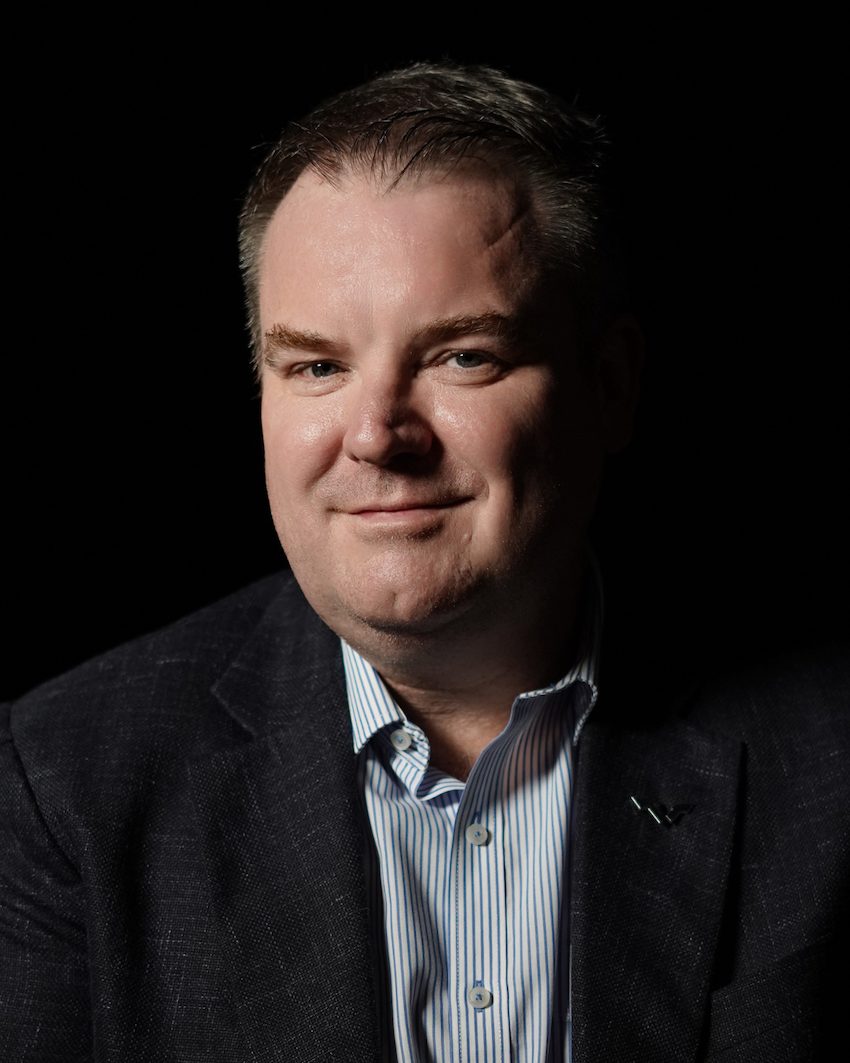
The power of sports sponsorships
The global sports sponsorship market is poised to grow from $66 billion in 2022 to nearly $108 billion by 2030, and the flourishing sports scene in the Middle East provides fertile ground for brands to market themselves to millions of consumers in the region. An event like Saudi Smash offers regional and global brands a platform to enhance visibility and engage with diverse audiences. The power of sponsorship, in its traditional form, is undeniable. It offers brands an unparalleled opportunity to connect with specific audience segments, fostering emotional bonds, driving brand loyalty, and catalyzing sales. Sponsorship, long-standing in the world of marketing, has entered a transformative era. Sports event partnerships have evolved from mere logo placements and brand affiliations to deeper, more strategic partnerships with an increased focus on values, social impact, and long-term engagement. These collaborations not only drive direct revenue but also build brand associations with health, vitality, and global connectivity, aligning perfectly with corporate goals of broader market penetration and consumer connection.
The evolution of table tennis
The establishment of WTT has been instrumental in transforming table tennis into a major player on the global sports stage. By introducing high-stakes competitions and enhancing broadcast quality, WTT events like the Saudi Smash exemplify how the sport is not only elevating its profile but also integrating seamlessly into the broader context of international sporting events. These events showcase world-class table tennis talent and craft a spectator experience that is globally engaging and accessible. They not only captivate new fans but also attract brand partnerships, further embedding table tennis into the global sports narrative.
Looking to the future
The Middle East’s journey towards becoming a global sports destination is full of promise, bolstered by continuous investments in technology and infrastructure. The transformation of sporting events in the region is emblematic of broader ambitions on the world stage. Through strategic innovation and proactive engagement, the Middle East is not just participating in but is actively leading the global sports dialogue. Events like the WTT Saudi Smash are in place to support this journey, setting new benchmarks for what a sporting event can offer and inviting the world to witness the rise of a new era in global sports prominence.
• Steve Dainton is chief executive of World Table Tennis
Koepka leads by 2 after second day of LIV Golf Singapore

- Smash GC lead team competition by one stroke from Ripper GC
SINGAPORE: For the third time in the last 18 LIV Golf regular-season tournaments, Brooks Koepka will take a three-shot lead entering the final round, this time thanks to a brilliant 7-under 64 in Saturday’s rain-delayed second round at LIV Golf Singapore.
When the Smash GC captain held such an advantage the previous two times, he closed the deal in Orlando and Jeddah last year. Given that the five-time major champion has found his form as his PGA Championship title defense looms later this month, it will be a big challenge for his Singapore pursuers to catch him.
Koepka’s Smash GC teammate, defending Singapore champion Talor Gooch, described the task succinctly: “Hard.”
But, he added, not impossible. “Winning golf tournaments is never easy,” Gooch said. “We all know that. Hopefully, we can make it not easy on him. Hopefully, I can make it not easy on him tomorrow.”
Koepka is at 12 under for the tournament, with Fireballs GC’s Abraham Ancer, Cleeks GC’s Adrian Meronk and the RangeGoats GC duo of Thomas Pieters and Matthew Wolff tied for second at 9 under. Four other players are another shot back – Gooch, Ripper GC’s Lucas Herbert and Marc Leishman, and HyFlyers GC’s Cameron Tringale.
If Koepka converts the three-shot lead into another victory, he will become the first LIV Golf player to win four individual tournaments. He also has a chance to lift two trophies on Sunday if his Smash team can convert its one-shot lead over the Rippers into the team title.
Although he’s playing with plenty of confidence, Koepka is taking nothing for granted.
“Anything is possible,” he said. “Gooch is trailing. He plays this place pretty well. I’ve just got to go out and do what I do, and from there, you can get beat. I have no problem with that if I get beat. But I just want to go out and play good golf, and that’s all I want to do, especially leading into the PGA.”
That good golf was evident following the 4 hour 45 minute weather delay that pushed the shotgun start back to the afternoon. After three pars to start his round, Koepka birdied the par-5 fourth when he threaded his second shot between a row of palm trees, his ball finishing just off the green.
That was the first of three consecutive birdies, and he finished his bogey-free round with four birdies in his last seven holes. A two-shot sequence seemed to epitomize his day — a 53-foot birdie putt on the 13th, then a near-ace on the 14th.
“Brooks was faultless today,” said Pieters, one of his playing partners on Saturday with first-round leader Sebastian Munoz. “I assume he’s going to do the same tomorrow, and it’s going to take a very low one from those of us behind him to win.”
“He’s comfortable being in the lead,” added Wolff, a former Smash teammate who was traded in the offseason to the RangeGoats. “He’s playing good. I think this golf course actually suits him really well. I’ll do what I can control, and other than that, just see what happens.”
Koepka has his wife Jena and nine-month-old son Crew in Singapore with him this week. It’s the third tournament Crew has attended, the first being LIV Golf Miami and the second at the Masters. His father finished T45 both times.
“I was reminded of that on the way over here,” Koepka said. “Hopefully get a little better result.”
Team Counting Scores
Standings and counting scores for Saturday’s second round of the team competition at LIV Golf Singapore. The three best scores from each team count in the first two rounds while all four scores count in the final round. The team with the lowest cumulative score after three rounds wins the team title.
SMASH GC -23 (Koepka 64, Gooch 66, Kokrak 71; Rd. 2 score -12)
RIPPER GC -22 (Smith 65, Herbert 67, Leishman 67; Rd. 2 score -14)
RANGEGOATS GC -21 (Wolff 65, Pieters 67, Uihlein 70; Rd. 2 score -11)
T4. CLEEKS GC -20 (Meronk 66, Bland 68, Kaymer 69; Rd. 2 score -10)
T4. FIREBALLS GC -20 (Ancer 67, Garcia 68, Chacarra 69; Rd. 2 score -9)
LEGION XIII -17 (Hatton 68, Rahm 68, Vincent 68; Rd. 2 score -9)
STINGER GC -14 (Oosthuizen 69, Burmester 70, Schwartzel 70; Rd. 2 score -4)
T8. CRUSHERS GC -13 (DeChambeau 66, Howell III 66, Lahiri 69; Rd. 2 score -12)
T8. HYFLYERS GC -13 (Mickelson 68, Tringale 68, Ogletree 71; Rd. 2 score -6)
T8. TORQUE GC -13 (Niemann 69, Munoz 70, Pereira 70; Rd. 2 score -4)
4ACES GC -12 (Varner III 67, Reed 68, Johnson 70; Rd. 2 score -8)
IRON HEADS GC -10 (Vincent 66, Na 70, Kozuma 72; Rd. 2 score -5)
MAJESTICKS GC -7 (Poulter 68, Stenson 68, Westwood 71; Rd. 2 score -6)
Faf du Plessis, Virat Kohli help Bengaluru stay in IPL play-off race

BENGALURU: Skipper Faf du Plessis and Virat Kohli helped Royal Challengers Bengaluru hammer Gujarat Titans by four wickets for their third successive IPL win on Saturday.
Chasing a modest 148 for victory, Du Plessis, who hit 64, and Kohli, who made 42, laid the foundations with a stand of 92 in 35 balls as the target was achieved with 6.2 overs to spare at Bengaluru’s M. Chinnaswamy Stadium.
Du Plessis’ departure triggered a collapse as Gujarat hit back with wickets from Joshua Little and Noor Ahmad to have the opposition in trouble at 117-6 when Kohli was dismissed.
Wicketkeeper-batsman Dinesh Karthik, who hit 21, and Swapnil Singh, who made 15, made sure there was no more drama as they steered the team home in an unbeaten stand of 35.
“It was important we didn’t look at the scoreboard when we went out to bat and try and play the way we play,” said Du Plessis.
“It was a bit nerve-wracking, another wicket, another wicket. Probably not the best but you’re trying to be positive, get your net run-rate up.”
Bowlers set up victory after pace spearhead Mohammed Siraj removed the openers including skipper Shubman Gill early and Gujarat lost regular wickets to be bowled out for 147 in 19.3 overs.
Siraj returned figures of 2-29 to be named man of the match but the pace bowler said he nearly missed the game after being “sick since last night.”
It was Bengaluru’s fourth win and third on the bounce in 11 matches as they jumped from the bottom of the table to seventh and keep their slim play-off hopes alive.
Gujarat’s hopes are also hanging by a thread as they slumped to their seventh loss in 11 matches.
“Very important to start from zero in our next match and move on from this game,” Gill said. “Learn from mistakes and not repeat them. All about winning from here on.”
Kohli, who reclaimed the top batting spot with 542 runs, came out roaring as he hit Mohit Sharma for two sixes in the opening over of the chase and Du Plessis soon joined in and moved ahead to raise his fifty in 18 balls.
The South African veteran smashed 10 fours and three sixes in his 23-ball blitz before being dismissed by Ireland left-arm quick Little.
Little took two more wickets including Glenn Maxwell for four as Bengaluru slipped to 107-4.
Little sent back Cameron Green and then Noor’s left-arm wrist spin silenced the home crowd when he had Kohli caught behind, but the hosts had the last laugh when Singh hit the winning six.
Earlier put into bat, Gujarat went three down for 19 inside six over before big-hitter Shahrukh Khan, who top-scored with 37, stood strong in a 61-run stand with David Miller, who hit 30 off 20 balls.
Left-handed Rahul Tewatia hit a 21-ball 35 and put on another key stand with Rashid Khan to add respect to the total.
2 Saudi players knocked out on day 1 of Saudi Smash 2024 table tennis tournament in Jeddah
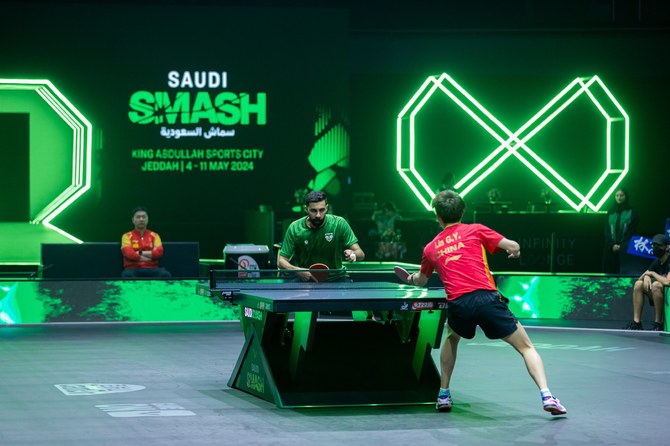
- Ali Alkhadrawi creates chances but is unable to take advantage of them as he loses in three games to Japanese professional Maharu Yoshimura
- Abdulaziz Bu Shulaybi faces tough test against Lin Gaoyuan of China, and is on receiving end of a masterclass from a player considered one of the best in the world
JEDDAH: Saudi Arabia suffered an early setback at the Saudi Smash 2024 table tennis tournament at King Abdullah Sports City in Jeddah on Saturday, when Abdulaziz Bu Shulaybi and Ali Alkhadrawi were eliminated in the first round of the men’s singles competition.
Ali Alkhadrawi was first to fall, defeated by Japanese professional Maharu Yoshimura, who won three games straight to progress to the round of 32.
Competing in front of a home crowd, and with pride etched on his face, Alkhadrawi put up a brave fight. He got off to good start, opening up a 6-3 lead in game one, and had his chances in the third, too, including three game points. However, Yoshimura rallied on both occasions, showing great character as he recorded victories of 11-9, 11-4 and 15-13 to deny the local hero.
Bu Shulaybi, a wildcard entrant to the event, faced a tough test against Lin Gaoyuan of China, who is considered one of the best players in the world. He gave it his all but also lost in three games, ending up on the receiving end of a masterclass in the game as the No. 6 seed comfortably won 11-4, 11-2, 11-4.


